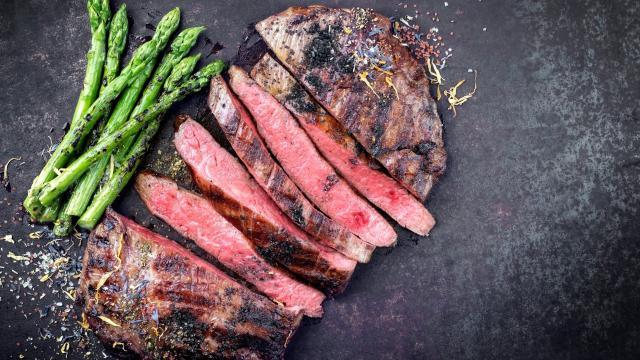For many people, their oven’s broiler is just kind of there. It’s handy for browning the top of casseroles or getting a roast chicken extra crispy, but beyond that, it doesn’t see much regular use. This is a huge missed opportunity. Broilers are so much more versatile than they get credit for — especially if you don’t (or can’t) own an outdoor grill.
As painful as it is, we gotta hand it to the Brits on this one: Calling broilers “grills” makes way more sense, because that’s what they are. Broiling and grilling food aren’t totally identical cooking techniques, of course, but they’re very close. Both cooking methods expose food to intense, direct heat from one direction; if you’d cook something on the grill, you can probably cook it under the broiler, too. Here’s how.
Learn to control the temperature
Much like grilling, temperature control is essential when broiling food. Unlike grilling, you don’t have a ton of say in how hot the flame (or coil) gets. If you’re lucky, yours has, at most, a “high” setting and a “low” setting — but most broilers just turn on and off. Even so, your broiler’s temperature range is wider and way more versatile than you think, and you can fine-tune it by moving your food closer to or further from the heating element.
It sounds obvious, but the further food is from the broiler, the slower it cooks; the closer, the faster. Your job is to play matchmaker. For example, if you’re roasting whole peppers or eggplants, feel free to put those as close to the heating element as possible. (In this scenario, “overcooking” is kind of the point.) But foods that take either a long time to cook — like chicken legs or a thick steak — or hardly any at all — shrimp, scallops, thin fish filets — need less direct heat, and therefore more space. It’s easy to adjust as you go: if those steaks seem to be barely cooking on a rack in the middle of the oven, just move them up a notch or two.
Yes, you can very easily turn your oven into a two-phase “grill:” Just put one oven rack as close to the broiler as you like, and one slightly (or much) further away. This way, you can move your food between the two heat zones as needed to control how quickly it cooks.
Food prep is key
Although you can cook pretty much anything under a broiler if you put your mind to it, strategic prep does help a lot. Generally speaking, if you want to broil the absolute daylights out of something from a very short distance, keep it thin and fatty — think kalbi, skirt steak, or thin slabs of tofu or eggplant, to name a few. The thinness will ensure it cooks through before the surface incinerates, while the fat will keep it nice and juicy. Also, never put anything with a high sugar content directly under the broiler. It will burn, your smoke alarm will go off, and you will have a bad time. Instead, try brushing sweet marinades on at the last minute so they caramelize rather than carbonize.
Equipment counts as prep, too, and thankfully, broiling doesn’t require much. With that said, investing in standard-sized aluminium sheet pans with matching racks is one of the best things you can do. Putting food on a rack in a pan encourages airflow — which is super important for browning and even cooking — and catches drips so they don’t burn onto the bottom of your oven. You can buy pans and racks at restaurant supply stores; they’re absolute essentials that last forever.
Keep the food moving — but don’t walk away
Broilers heat food from one direction only, which means it’ll only cook evenly if you keep it moving around. The amount of flipping, nudging, and general fussing required will vary from dish to dish, so keep an eye on it and trust your gut. Don’t worry about flipping your food “too much” — unless it’s prone to falling apart, frequent flipping won’t hurt anything. In fact, it’s more likely to help than harm.
This brings us to the final commandment of broiling: Watch your food like a hawk until you know what your broiler can do. The closer your food is to the heating element, the truer this is. Some dishes can go from golden brown to black and smoking in the blink of an eye, so don’t give them the opportunity. Just keep an eye on the oven, be patient, and reap the rewards.

Leave a Reply
You must be logged in to post a comment.